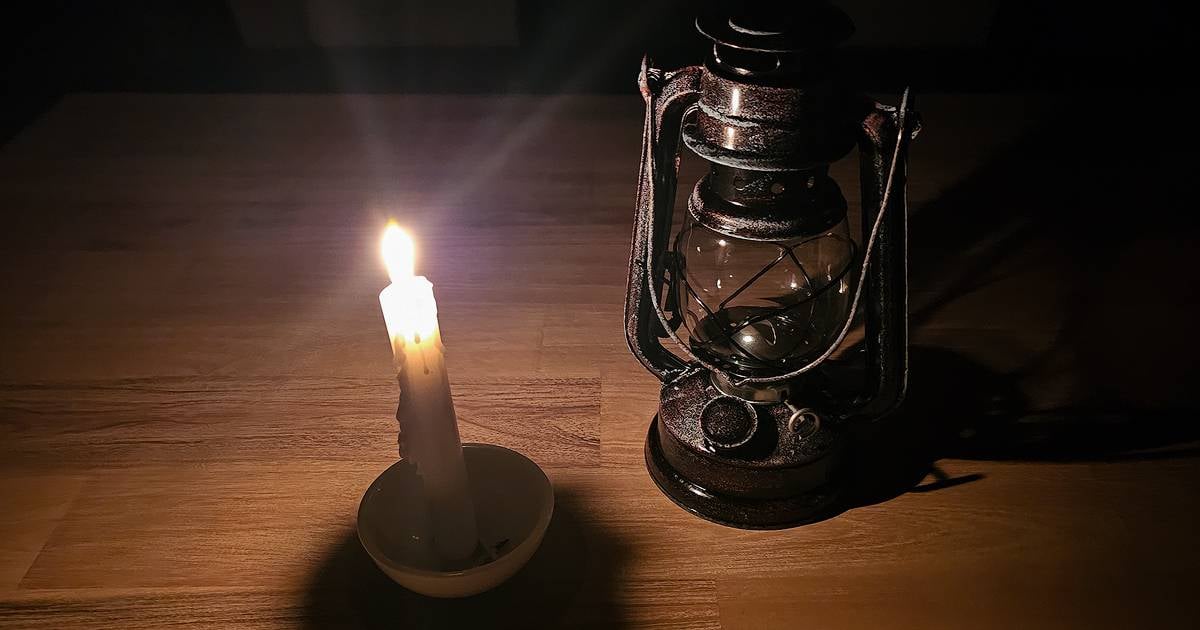The energy crisis in Cuba is worsening, hitting the central and eastern provinces hardest, where power outages last over 20 hours a day, plunging residents into desperation. With electrical generation faltering, breakdowns in thermoelectric plants, and a fuel shortage, the National Electric System struggles with a critical 1,600 megawatt (MW) deficit.
Dire Situation in Ciego de Ávila and Surrounding Areas
Ciego de Ávila is enduring such a severe electrical crisis that Daniel Pérez García, the general director of the local Electric Company, likened it to being "unplugged from the National Electric System." Speaking to Periódico Invasor, he warned that the situation won't improve until thermoelectric power plants are synchronized again and generation increases.
This grim reality also extends to other central and eastern provinces, where citizens are left without electricity for nearly the entire day. On Tuesday, the official report from the Cuban Electric Union (UNE) noted eight power generating units were offline due to failures or maintenance, including:
- Unit 3 of the Santa Cruz Thermoelectric Plant
- Unit 3 of the Renté Thermoelectric Plant
- Units 1 and 2 of the Felton Thermoelectric Plant
- Unit 2 of the Santa Cruz Thermoelectric Plant (maintenance)
- Units 3 and 4 of the Cienfuegos Thermoelectric Plant (maintenance)
- Unit 5 of the Renté Thermoelectric Plant (maintenance)
Outages Lasting Over 20 Hours a Day
The lack of generation capacity has led to power outages extending up to 20 hours daily in various central and eastern provinces, with only brief periods of electrical service. This severely impacts daily life, hindering food preservation, meal preparation, and the operation of essential appliances.
"It's not just the inconvenience of no electricity; we can't cook, fans don't work, and children can't sleep. It's unbearable," a resident of Camagüey lamented on social media.
Is There a Light at the End of the Tunnel?
The UNE has announced efforts to incorporate new renewable energy sources to mitigate the crisis, including the construction of three solar photovoltaic parks in Ciego de Ávila. However, progress has been delayed by material shortages and thefts, casting doubt on their short-term effectiveness.
For instance, the solar park in Grego, expected to contribute 21.87 MW to the National Electric System by March 29, faces possible synchronization delays. Meanwhile, residents continue to endure unsustainable conditions.
Frustration and Despair Among Cuban Citizens
Cubans have taken to social media and local outlets to voice their frustration over the government's lack of solutions. Comments online highlight the despair of those enduring constant blackouts. "We always get the short end of the stick; the central-eastern region suffers the most. They don't have the guts to cut power in Havana," one user remarked.
"They've stripped us of our dignity," said another, while a different user demanded the government stop misrepresenting the energy crisis, adding, "It's better to stay silent than to keep lying."
This severe energy crisis has plagued Cuba for over five years with no immediate solution in sight. Authorities have not provided answers on when conditions might improve, leaving residents in the central and eastern regions trapped in endless blackouts and declining quality of life.
Understanding Cuba's Power Outage Crisis
What is causing the power outages in Cuba?
The power outages in Cuba are primarily caused by a shortage in electrical generation, breakdowns in thermoelectric plants, and a lack of fuel.
How long do the power outages last?
In some central and eastern provinces, the power outages can last up to 20 hours a day, disrupting daily activities significantly.
Is there any solution in sight for the energy crisis?
While the Cuban Electric Union is working on renewable energy projects, delays and material shortages make an immediate solution unlikely.
